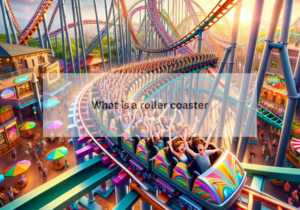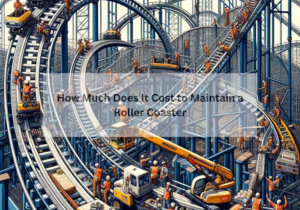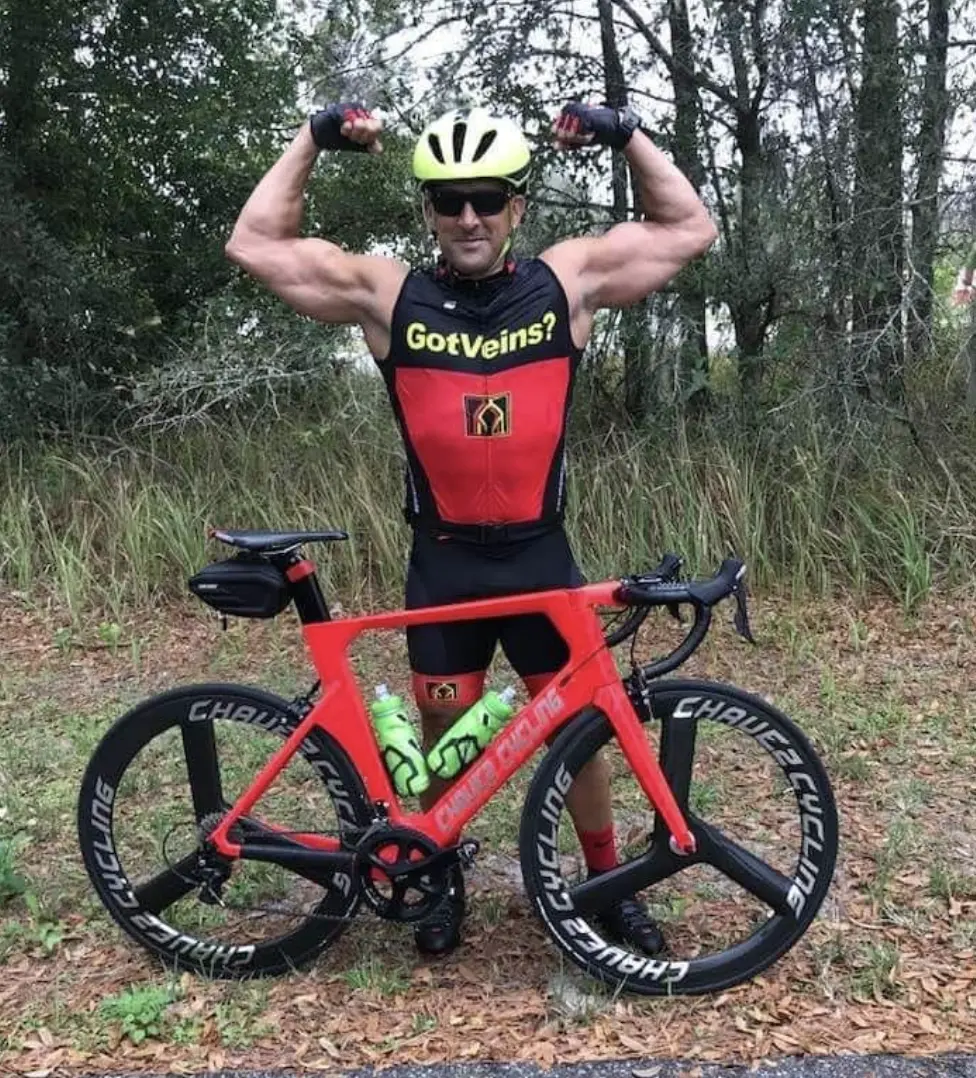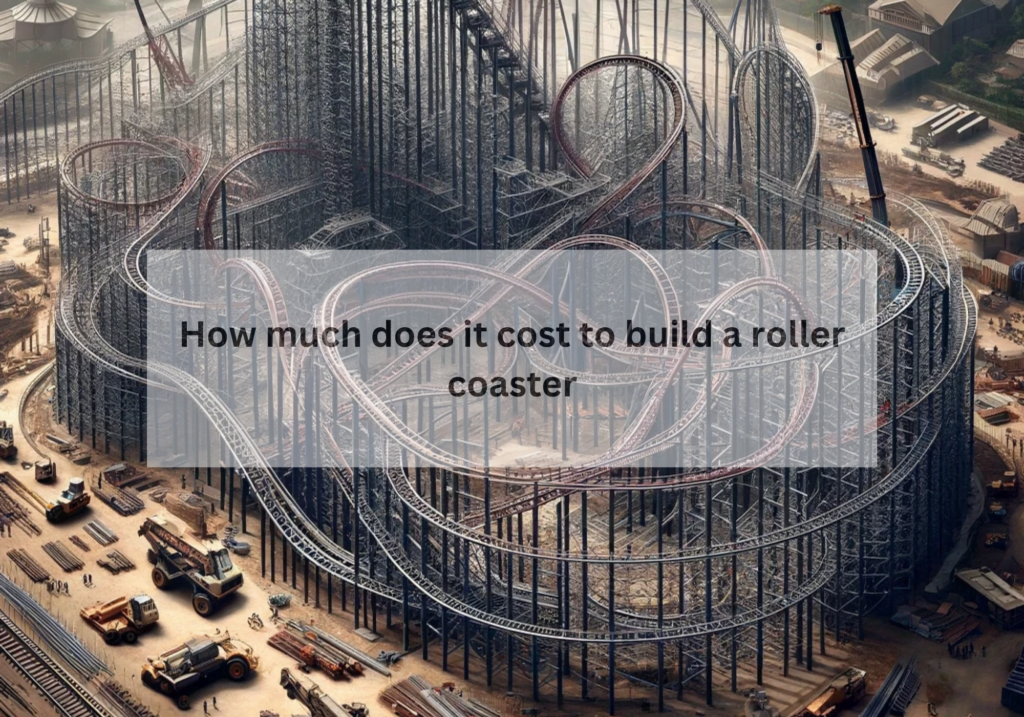The roller coaster is among the best amusement as well as thrill rides out of the amusement or theme park. It gives an opportunity to the child as well as older to get an amusement ride experience. However, the roller coaster is one of the most expensive builds out of an amusement park. Are you interested to know How much does it cost to build a roller coaster? Here in this article, we’ll discuss all the costs of building an actual roller coaster.
What is a roller coaster?

A roller coaster is a type of recreational riding system where cars roll over one or more railways. Railways on roller coasters are arranged in such a way that they have steep slopes, straight up, and even several sharp curves. The car transmits a speed that entertains the passengers when passing over this line.
Do you know when the first roller coaster was built? The first roller coaster was created in 1784 in St. Petersburg’s Oreinbaum Gardens. Some historians think the French developed the first roller coaster Russe Mountains in Belleville, which was built in 1812 in Paris. Although the roller coaster was invented in Europe, the modern ride emerged in the United States by La Marcus Thompson, who built a twisty railway in 1884.
Most people are interested to know which is the fastest coaster in the world. The world’s fastest roller coaster is the Formula Rossa, located in the United Arab Emirates. Located in the park of Ferrari World Abu Dhabi, this fastest roller coaster in the world is made of steel. Its average speed is about 240 kilometers or 149.1 miles per hour, and it is about 2.2 kilometers in length.
Types of roller coaster

Those who appreciate the thrill of a roller coaster will find it an enjoyable and exhilarating experience. You should ride as many different kinds of coasters as you can if you’re a fan of them. The following is a list of the most popular roller coasters.
Accelerator Coaster
The accelerator roller coaster creates an adrenaline rush that ensures the best speed and the fastest time possible. A great alternative, characterized by high-heart-stopping and high speeds up to 60-150 and 40-456 altitude. Designed to meet customer budgets with space requirements and park-specific layouts.
Flaying Roller Coaster
The Flying Roller Coaster has been available for over twenty years, providing an inverted and bottomless feel to the flying world. These roller coasters have been designed to provide the feeling of flying without lying down. This coaster makes the ride more comfortable and also significantly increases the popularity of the ride.
Stand-Up Coaster
Stand-up coasters enable riders to stand while riding, providing an unusual sensation. On a hanging coaster, you still have a seat like a bicycle to rest against. You will also have over-the-shoulder harnesses for added support when leaning on the coaster.
Corkscrew Coaster
The corkscrew coaster track is designed to flip passengers multiple times throughout the ride. Considering the nature of the constraint, it is possible that this ride will not be able to handle people of greater size. To guarantee that the ride safety system appropriately restrains them, guests must have enough lower extremities to fit into the seats.
Floorless roller coaster
A floorless roller coaster is a steel coaster without a floor. It only uses a floor to load and unload riders. The layout includes 3-7 inversions. When you climb into one of the coasters, sit in one of the seats and swing your legs down freely.
Inverted Roller Coaster
An inverted coaster allows riders to go around the track upside down. On an inverted coaster, the seat is hooked to the tracks. This enables you to hang your legs and feet down. If you aren’t cautious, you’ll lose your shoes on this roller coaster.
Bobsled Roller Coaster
Bobsled roller coasters consist of bobsleigh-like vehicles racing downpipes open from the top. Cars may move freely inside the pipes to the process of receiving the feeling of riding a genuine bobsleigh on snow. Due to their convoluted design, the force of gravity will undoubtedly surprise you. Family-friendly roller coasters.
Dive Coaster
A dive coaster is one kind of steel roller coaster that has been designed to feature ultimate vertical drops. Countless people are drawn to the exhilarating experience of peering down as well as being dropped from vast heights. It had the same train length and massive drop as the original, but it also included a totally vertical drop.
You can read also: How much does it cost to build a dam
How much does it cost to build a roller coaster?

Most of the people out here are willing to know the estimated average cost to build a roller coaster. The building cost of a roller coaster may vary depending on the building materials, ride type as well as the length of the roller coaster. Below are some price ranges based on different materials and lengths.
- Building a kiddie roller coaster can cost around $10,000 for a used one to $300,000 for a new one.
- Building a steel coaster can cost around $2.00 Million to $25.00 Million [70′ to 300′ tall]
- Building a wooden coaster can cost around $1.00 Million to $10.00 Million [30′ to 160′ tall]
- Building a fully themed roller coaster can cost up to $100 Million
How Much Does It Cost to Maintain a Roller Coaster?

The cost of maintaining a roller coaster is highly dependent on the type, mechanical engineer, as well as size. Wooden roller coasters are less expensive to construct but need more maintenance, such as tracking and wood replacement. Steel coasters have much less but still require frequent inspections and painting. The yearly budget for repairs and maintenance on a roller coaster should be from $10,000 to $150,000.
How long does it take to build a roller?

The process of developing a roller coaster begins with the formation of an engineering team and concludes with the construction of the coaster. The company’s Roller Coaster design process might take around two years, while the construction of the roller coaster can take around 10 months. Smaller designs, on the other hand, demand less effort, and the whole process may be completed in a year.
How to ride a roller coaster
In the event that you are visiting an amusement park and you are willing to ride a Big Coaster, what should you do? Here I will go through several things that you need to ride a coaster.
Choose the seat
A seat in a better position will give you a bit more entertainment while you are riding a roller coaster. A seat in the middle position of the coaster track is one of the best positions to sit. This will protect you from excessive jolting as well as reverse motion.
Sit comfortably properly
To prevent damage and lessen nausea as well as dizziness, sit as straight as possible on the coaster track, with the neck and head against the seatback, or as directed by park employees. Remember to breathe during the trip to avoid tense muscles. If you’re about to vomit, take deep breaths through your nose and out through the mouth.
Focus on a fixed point
Some rides are so rapid that it’s difficult or even impossible to keep your eyes on the horizon. If this is the situation, try concentrating on the vehicle across from you or, if you’re on a spinning ride, a non-moving portion of the mechanical system.
Stay Hydrated
Prior to embarking on every ride, it is vital to replenish one’s fluid reserves. The importance of staying hydrated all across the day cannot be overstated. A well-hydrated body is sufficient to withstand the demands of strenuous exercises. It will also aid in the recuperation process after the procedure.
Wrap Up
The roller coaster is an entertaining ride in the theme park industry, where many people ride every day. It is one of the most costly installations in any amusement park. We’ve covered the cost of installing a roller coaster here, which will give you a lot of ideas.

Cycling training tips and camps with Joel Chavez, Pan-American Gold Medalist has been writing about savings and finance since 2016 and analyzes thousands of products to find you the best deal. He will help you save money while you shop. They cover huge products including home, garden, car, business, tech, and many more for making the best financial decision.


